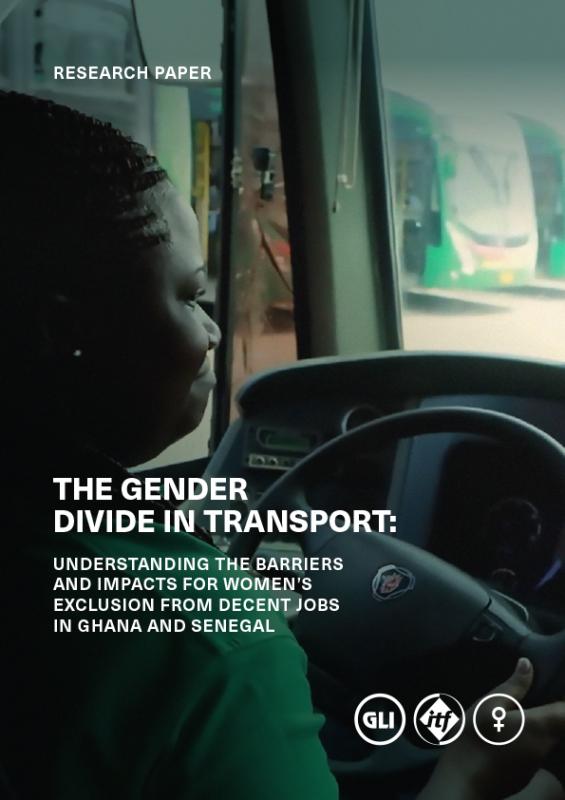This charter informs unions and employers of the rights workers should enjoy in order to ensure a technology introduction that guarantees success to the employer and proper protections to the workers.
The negotiation of technology is the keystone to successful and safe technology introduction. The preconditions for meaningful negotiation include:
- Early information, ongoing consultation and final negotiation of the technology
- For digital technologies negotiation should cover
- The criteria used by algorithms in software,
- AI and decision-making systems
- Negotiation of the datasets used by automated decision-making systems
- Negotiation of standards and maintenance procedures for sensors and software
Technology designers and employers have an ethical duty to avoid negative impacts on workers. Often technologies can create new problems for workers, forcing them to develop ‘work-arounds’ that add stress or reduce productivity. To avoid this the designers need to employ a co-design process that puts the worker experience at the centre.
- Tech developers should be informed of relevant labour regulations
- Workers should be included in the design process by:
- Being informed of the problem the technology is meant to fix
- Being asked to identify potential issues with the technology
- Being asked to identify any training needs that might arise o Ensuring that worker feedback includes specific input from women workers
- Committing to incorporate feedback into the technology design
The potential issues technology brings can to a degree be predicted if they are examined beforehand. Employers should commit to carrying out a risk assessment before technology deployment, and impact assessments after a technology deployment, as part of the negotiation process around technology.
Risks and impacts should be assessed on the following criteria:
- Potential impacts on the environment (energy use, water use, toxicity)
- Potential impacts on workers’ labour rights
In particular digital technologies and their sub-components (sensors, software, datasets, algorithms etc) should be tested for their individual and collective impacts such as:
- Gender discrimination impacts on women and non-binary workers.
- Racial discrimination impacts on ethnic minority workers.
- Segregated impacts on different age groups (particularly young workers, and those over 50).
- OSH impacts, including physical and psychosocial impacts and sanitation, particularly where related to productivity criteria.
- Privacy impacts.
- Safety issues raised by cybersecurity testing.
In addition, as part of risk assessments employers and technology developers need to ensure clear liability paths for system component malfunctions exist
Digital technologies are built on a foundation of data. This data is either from pre-existing datasets, or is gathered in real-time in the workplace. Often data is gathered from multiple sources and combined. Data sources in the workplace can include:
- Video-audio recordings
- Geolocation of vehicles and equipment
- Data from scanning guns or RFID tags
- Data from ID cards and electronic key fobs
- Keystroke monitoring and productivity software
- Operation/process management software
- Data from sensors embedded in machinery or vehicles
- Mobile phone pings, messaging data (emails or sms)
- Security gates or doors – fingerprint scanners, number plate scanners
- HR data, including contact information and performance or training data
Much of this data is made by workers while they do their jobs. This data describes a work process and workers as part of the work process. It feeds the algorithms and software which apply criteria to this data to make automated decisions about what is desirable and what is not.
Data that describes workers as individuals or as a collective, and which would not exist without workers’ interaction with a person, a machine or a vehicle, should be considered workers’ data and subject to shared control through negotiation.
Once gathered data can then be reproduced freely, and can be easily transferred to third parties or used for purposes beyond those it was initially gathered for.
Most transport workplaces make some use of data, but as our workplaces become more digitalised, data collection and use will inevitably grow. Data therefore has many implications for workers, but is not something that most unions are used to negotiating around.
In order to successfully negotiate around data and algorithms we need a basic level of transparency, otherwise unions do not know how performance is being assessed.
The foundations for this are:
- Explanation rights, what data is collected, why is it collected, where is it storied, who can access it, how long is it stored, how the algorithms using it function.
- A commitment not to sell workers’ data on to third parties.
- Individual and collective access to datasets and algorithms used to inform AI.
- Allowing workers effective control over any biometric or health data and a commitment not to use ‘emotional recognition’ technologies.
Algorithmic transparency is the counterpart of data controls. For effective collective bargaining around algorithms unions need:
- A register of all the automated decision-making systems in the workplace. - An explanation of who wrote the algorithms (to establish liability), how the algorithm works (what it is measuring and what criteria are being applied), who decided upon these criteria, what data the algorithm makes use of (is this data providing a fair picture of the work process?), has this software been previously tested, and who operates, updates and otherwise maintains the automated decision-making systems.
- Algorithmic parameters should also be time-bound and subject to change only upon negotiated agreement.
Digital technologies are a combination of hardware, sensors, data stores, and software. The software and sensor elements are highly customisable. These technologies are usually manufactured, operated and maintained by a collection of different companies, which makes determining liability and responsibility more complicated.
In some cases workers risk becoming part of a ‘moral crumple zone’ (Elish, 2019) in which they carry the can for failures elsewhere in the technology supply chain.
To avoid this, as part of the consultation and negotiation process workers should be informed of what the legal framework for establishing this is, and what measures have been taken to ensure that all parties enjoy clarity with this regard. Employers should strive to provide clarity even where national laws have yet to do so in full.
Workers should be adequately insured to protect them in cases where liability is still disputed.
The growing use of semi-or fully automated decision making systems in the workplace underlines the importance of measures to protect workers from errors, glitches or hacking. In cases of autonomous or automated machinery or vehicles such issues could have implications for the immediate physical safety of workers.
- To protect workers from problems with automated or highly-automated decision-making systems, they should have a human point of contact within the company who enjoys the authority to enact necessary changes to these.
- To protect workers from problems with automated or autonomous machinery and vehicles there should be a system in place to trigger an automated power cut, alongside an alarm to a human operator with an off switch.
Experience has shown that to protect workers from issues with automated decision-making systems, they must be provided with organisational mechanisms to appeal these decisions, or the data and algorithms they are based on.
Further, the introduction of new technologies often lead to changes to the skills or competencies required of specific groups of workers, including women and young workers. Employers should therefore ensure they provide quality training that is specific to the technologies being introduced.
Moreover, workers whose roles are fully or largely eliminated by technology should be offered the opportunity to retrain for new roles created by it. This is particularly relevant for women workers who are more likely than men to lose their jobs to new technologies.
Where workers do lose their jobs and do not desire to undertake retraining they should be offered adequate financial compensation, or facilitated to find work with another employer.
Technology introduction can result in increases in productivity. Furthermore the digitalisation of the workplace can enable employers to monetize data about the workplace and the workers in it. Since workers produce much of the data that drives productivity improvements, and can then be monetised, it is right that they should share in the benefits.
Effective ways of doing so include:
- Negotiation of a reduction in working time without reducing pay
- Negotiation of an increase in pay
In cases where data is monetised a share of the income could accrue to the workers in the form of an annual bonus or a similar periodic payment as agreed through negotiation based on an percentage of the total profit derived from the data over that same period.



